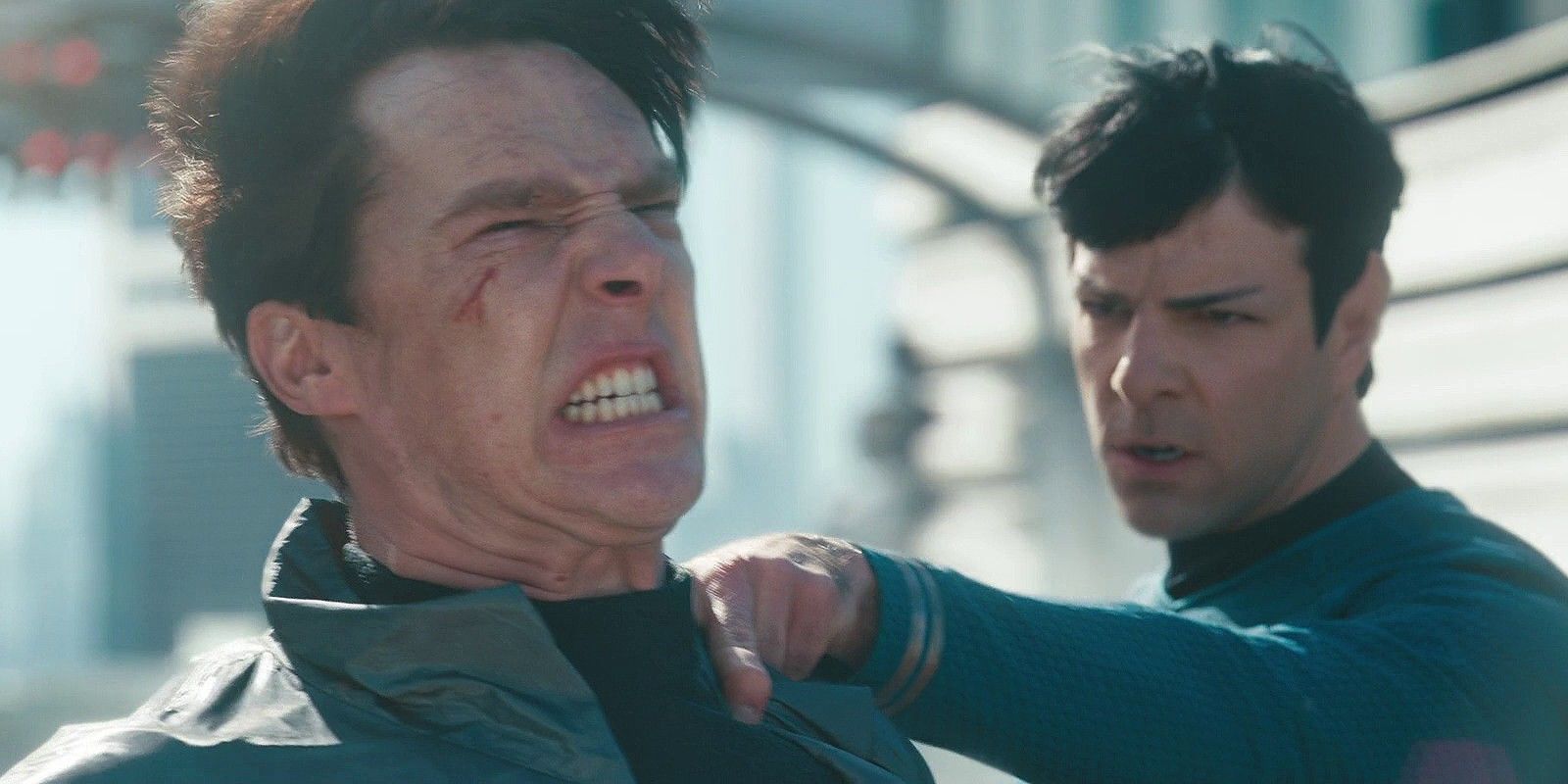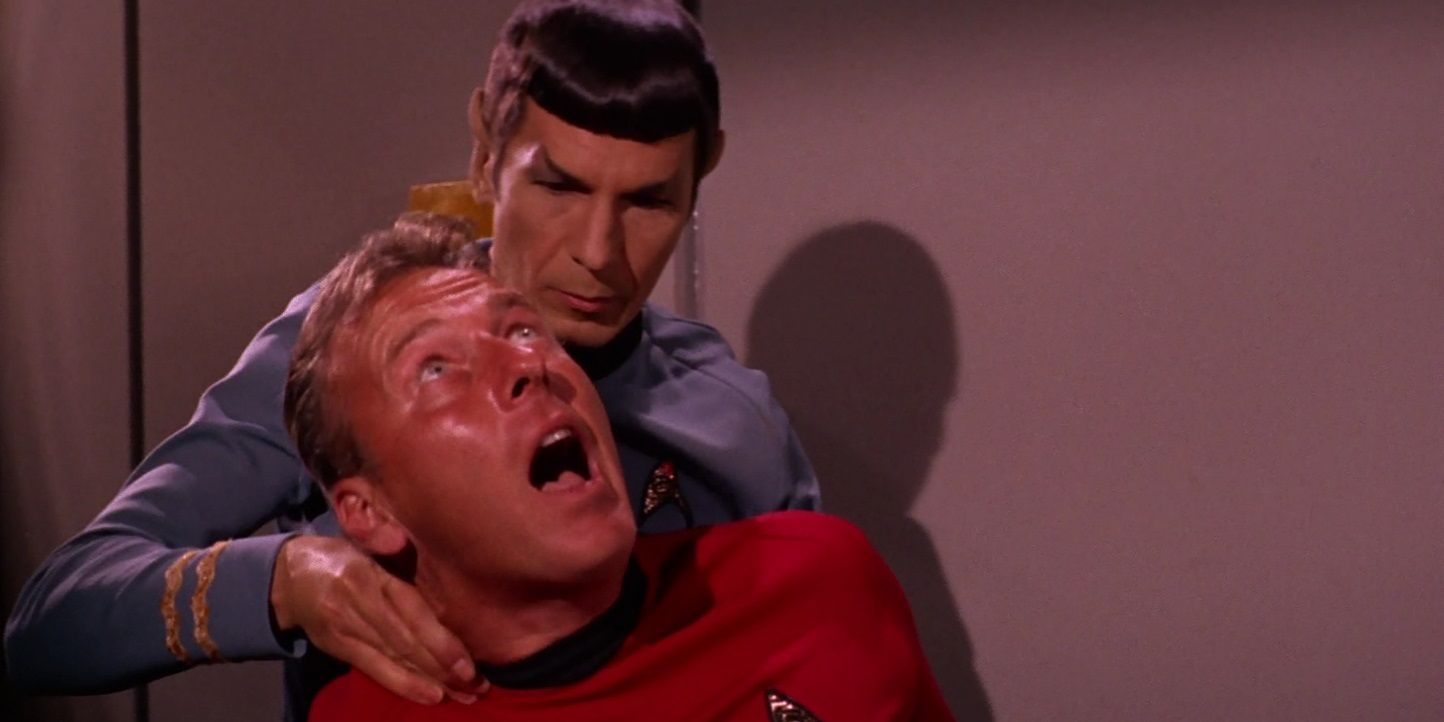Where did Star Trek's Vulcan nerve pinch come from, and how is it utilized throughout the franchise's canon? After Star Trek first warped onto screens in the 1960s, Leonard Nimoy's Spock became an immediate hit with viewers. As the Enterprise's resident alien, Spock represented Star Trek's main source of intrigue with his cold, logical thinking, pointy ears and strange Vulcan customs. Another immediately intriguing element of Spock's character was his Vulcan nerve pinch - a calm shoulder grab that would render Spock's enemies instantly unconscious.
As a visual, this unique combat technique not only looked great, but served as an extra-terrestrial contrast to Kirk's all-too-human fists a-flying approach. First appearing in an early episode of Star Trek's debut season, "The Enemy Within," Spock's Vulcan nerve pinch has been reenacted on numerous occasions through over 50 years' worth of movies and TV shows, all the way up to the recent Star Trek: Discovery series and the Kelvin Timeline reboot movies.
Like most strokes of genius, the Vulcan nerve pinch came about in a relatively spontaneous way, resulting from a spot of on-set improvisation between Nimoy and Shatner who were, at this juncture, still on good terms. In "The Enemy Within," the reliable "transporter malfunction" trope caused Captain James T. Kirk to split into two different people - one representing his good side, and the other an evil troublemaker causing havoc on the Enterprise. As the other crew members began to realize Kirk wasn't quite himself, the episode's script required Spock to knock out his captain, presumably via the old-fashioned method.
Leonard Nimoy, however, felt that such an act was out of character for Spock, and instead suggested a less aggressive maneuver that would have the same effect, reasoning that the Vulcans might have a deeper understanding of physiology than humans, and could exploit hidden weaknesses. Understanding his co-star's suggestion, Kirk duly collapses upon receiving the pinch and the iconic acting duo thereby established a sequence that would be repeated throughout every single Star Trek TV series over the next half century.
In The Making of Star Trek, Gene Roddenberry cleared up some of the science behind the Vulcan nerve pinch, revealing that the move prevents blood and electrical signals from reaching the brain. This doesn't necessarily tally up with real-life biology, but proved incredibly effective in the Star Trek world, although some superhuman beings were able to resist being knocked out, such as Khan in Star Trek Into Darkness. While the move originated on Vulcan, the nerve pinch has been used by a variety of characters throughout the Star Trek franchise, usually medical professionals or highly intelligent beings, such as Star Trek: Voyager's holographic Doctor, Seven of Nine and The Next Generation's Data.
Just as Kirk was the first recipient of Spock's special move in the original Star Trek series, so too did he suffer the move in the 2009 reboot movie after causing trouble on the bridge of the Enterprise. Unfortunately, Kirk was unable to learn the move for himself, despite Spock's best efforts, but other human characters have enjoyed better luck. Patrick Stewart's Picard and Sonequa Martin-Green's Michael Burnham have both used the Vulcan nerve pinch, the former after many years of practice and the latter after being adopted by a Vulcan family as a child. Sometimes, the Vulcan nerve pinch would be used for comedic effect. The Search For Spock saw Dr. McCoy attempt the move while in possession of Spock's Katra and fail magnificently. In the sequel, The Voyage Home, Spock nerve pinches an ignorant youth on public transport to a chorus of cheers - something most fans have no doubt dreamed of doing on many occasions.
Star Trek: Picard premieres in early 2020 on CBS: All Access.


